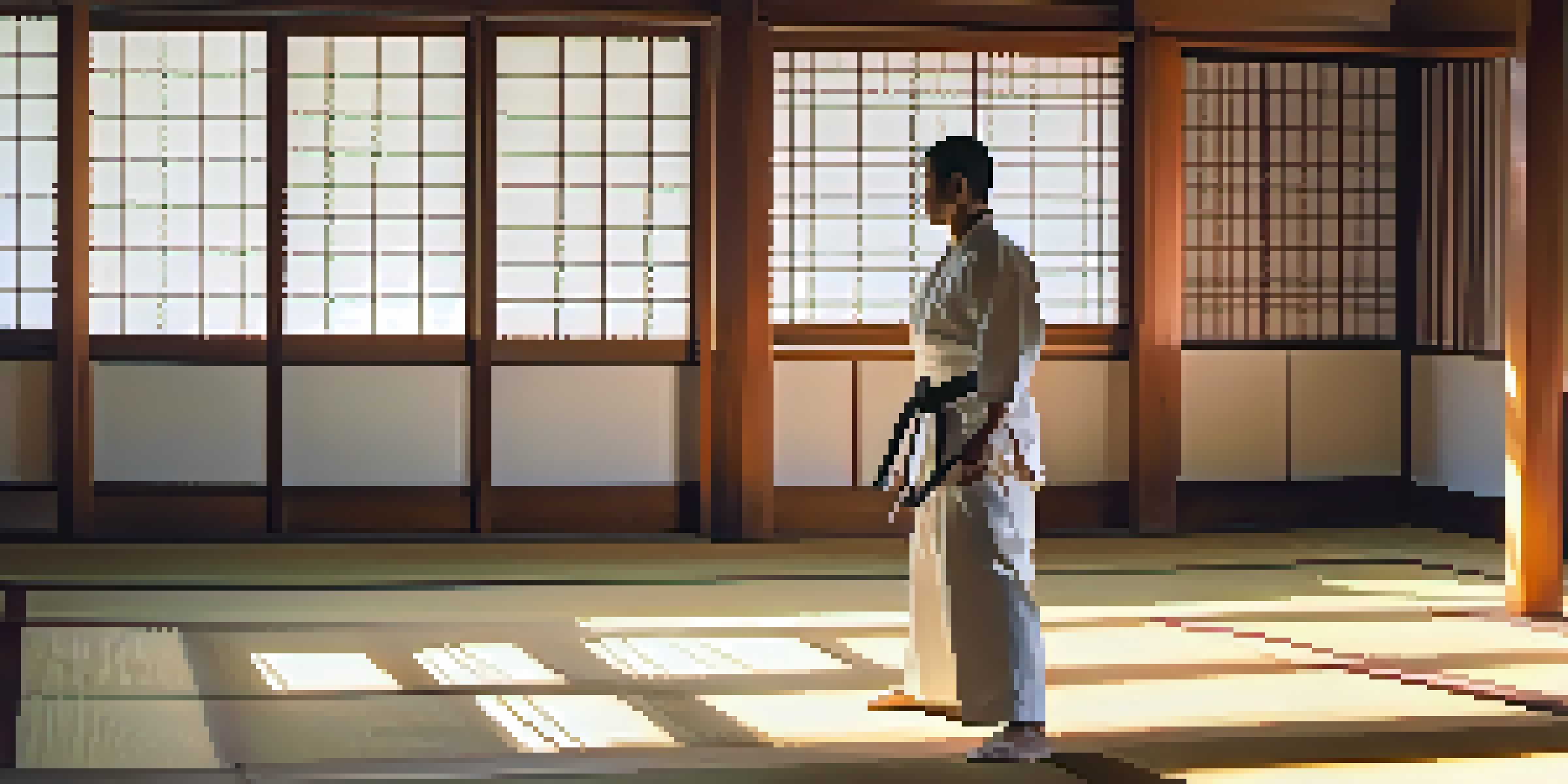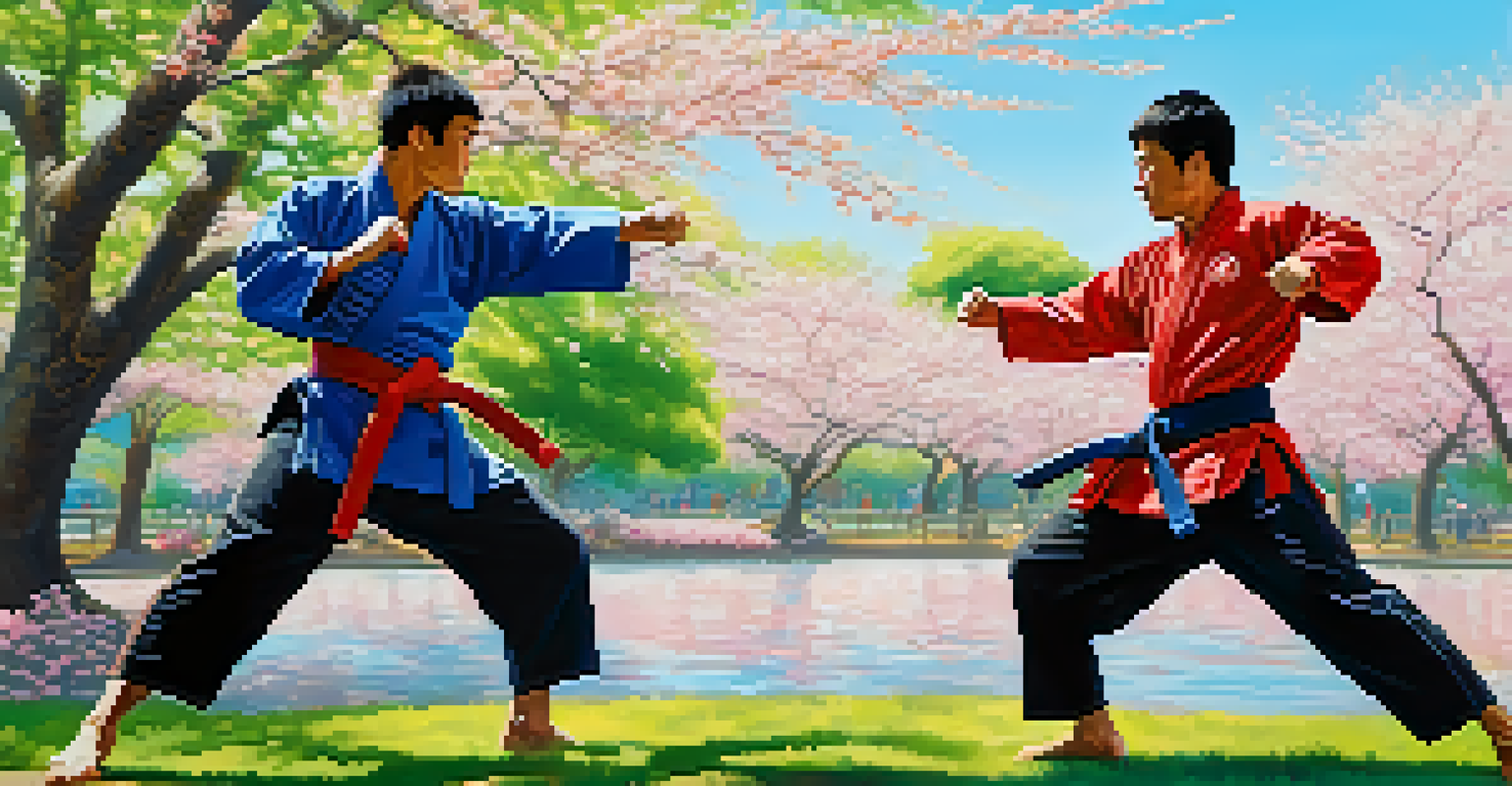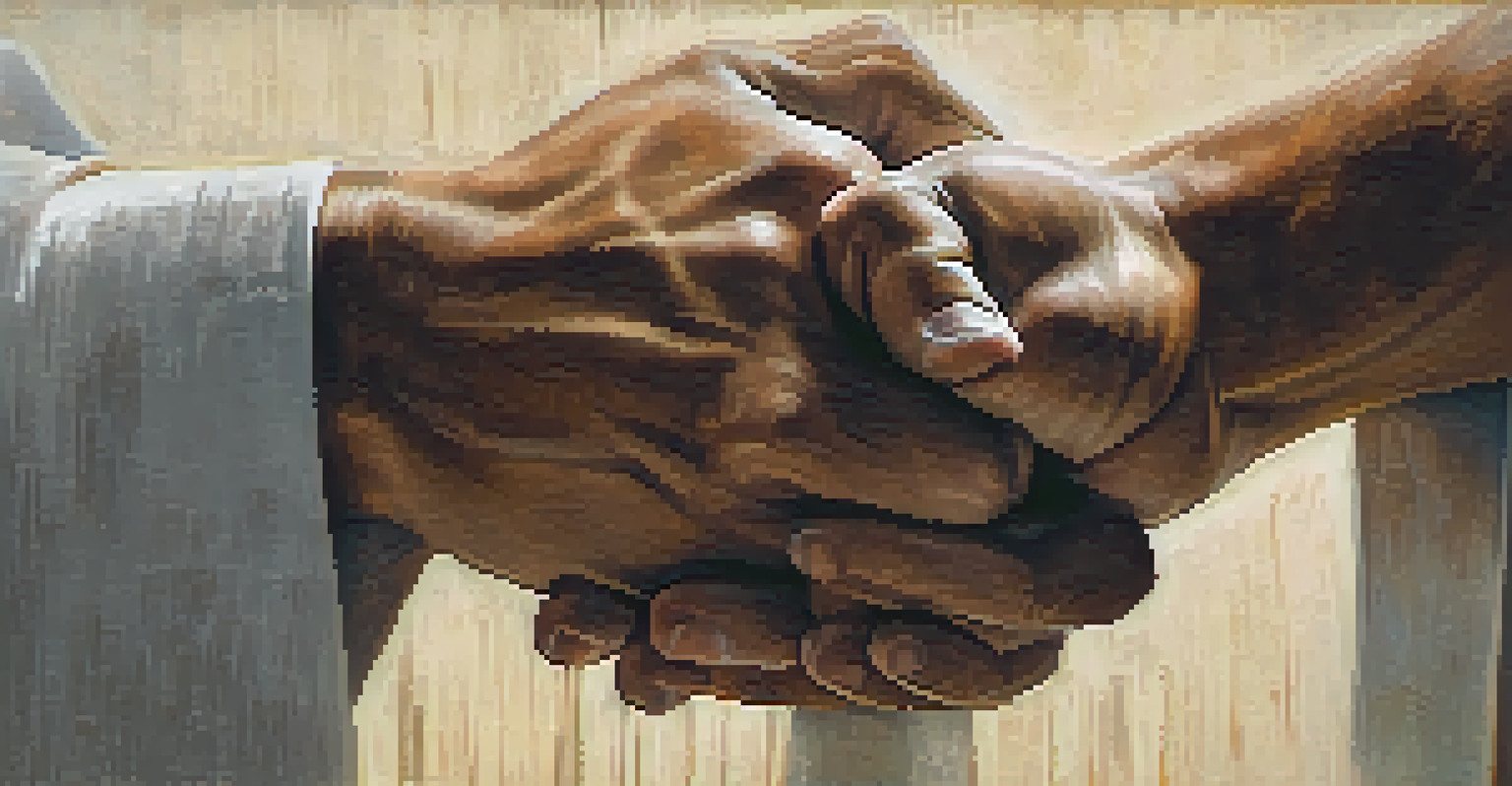The Interplay of Strength and Vulnerability in Martial Ethics

Understanding Martial Ethics: A Foundation for Practitioners
Martial ethics refers to the moral principles that guide martial artists in their practice and interactions. It's not just about physical prowess; it encompasses respect, discipline, and responsibility. The foundation of these ethics often stems from understanding the balance between strength and vulnerability, crucial for both personal growth and community well-being.
Strength does not come from physical capacity. It comes from an indomitable will.
When martial artists engage in training, they learn to harness their physical strength, but they also confront their own vulnerabilities. This duality shapes their character and influences their interactions with others, fostering a sense of humility. By acknowledging their weaknesses, practitioners can cultivate resilience, which is a vital component of martial ethics.
Ethics in martial arts teach practitioners that true strength is not merely about dominating others but about understanding oneself. This self-awareness leads to improved decision-making, both on and off the mat, encouraging martial artists to act with integrity and respect towards their peers.
The Strength Found in Vulnerability
Vulnerability is often viewed as a weakness, but in martial arts, it is an essential strength. Acknowledging one’s limitations allows for growth, as it invites self-reflection and the pursuit of improvement. This openness creates a safe environment for learning, where practitioners can share experiences and support each other’s journeys.

For example, a martial artist may struggle with a specific technique. By admitting this challenge, they can seek guidance from peers or instructors, fostering a collaborative learning atmosphere. This willingness to be vulnerable not only enhances individual skills but also strengthens the entire martial arts community.
Strength in Acknowledging Vulnerability
Embracing vulnerability is essential for growth, allowing martial artists to reflect on their limitations and foster a supportive learning environment.
Moreover, this interplay of strength and vulnerability encourages empathy among practitioners. When individuals openly share their struggles, it breaks down barriers and builds connections, leading to a more supportive environment where everyone can thrive.
The Role of Empathy in Martial Ethics
Empathy plays a crucial role in martial ethics, as it bridges the gap between strength and vulnerability. When practitioners understand the challenges faced by others, they can respond with compassion rather than aggression. This mindset fosters a culture of respect and camaraderie, essential in any martial arts community.
Vulnerability is the birthplace of innovation, creativity, and change.
For instance, during sparring sessions, a practitioner who empathizes with their partner's struggles will approach the match with a mindset of support instead of domination. This not only improves the learning experience but also reinforces the ethical principles that govern martial arts practice.
By prioritizing empathy, martial artists cultivate a sense of belonging and safety, encouraging individuals to embrace their vulnerabilities. This collective strength ultimately contributes to a more ethical and nurturing environment, where all practitioners can grow and excel together.
Balancing Strength and Vulnerability in Training
Finding the right balance between strength and vulnerability is crucial in martial arts training. While building physical prowess is important, it should not overshadow the need for emotional and mental growth. Practitioners must learn to challenge themselves while also being open to feedback and learning from their mistakes.
Training environments that emphasize this balance often lead to more effective learning outcomes. For example, incorporating drills that highlight both offensive and defensive techniques allows practitioners to understand the importance of timing and strategy. This not only enhances their physical skills but also deepens their understanding of their vulnerabilities.
Empathy Enhances Martial Ethics
Practicing empathy helps martial artists respond with compassion, creating a culture of respect and camaraderie within the community.
Ultimately, a balanced approach to training encourages martial artists to embrace both their strengths and weaknesses. This holistic perspective nurtures well-rounded individuals who can navigate challenges on and off the mat, embodying the true spirit of martial ethics.
The Influence of Culture on Martial Ethics
Cultural backgrounds significantly shape the perception and practice of martial ethics. Different martial arts styles carry unique philosophies that influence how practitioners understand strength and vulnerability. For instance, Eastern martial arts often emphasize harmony and balance, while Western styles may focus more on competition and dominance.
As practitioners engage with various techniques and philosophies, they can learn to appreciate the nuances of different cultural approaches. This exposure broadens their understanding of martial ethics and highlights the universal themes of strength and vulnerability that resonate across traditions.
By embracing diverse cultural perspectives, martial artists can enrich their own practice and contribute to a more inclusive environment. This cultural exchange fosters respect and understanding, making the martial arts community stronger and more connected.
Real-Life Applications of Martial Ethics
The principles of martial ethics extend beyond the dojo and into everyday life. Practitioners can apply the lessons learned about strength and vulnerability to various situations, from personal relationships to professional environments. For example, a martial artist may use their understanding of empathy to resolve conflicts in a constructive manner.
Moreover, the resilience built through martial training equips individuals to face challenges with confidence. When confronted with adversity, they can draw upon their experiences of vulnerability and strength to navigate difficult situations more effectively.
Cultural Influence on Martial Arts
Diverse cultural backgrounds shape martial ethics, encouraging practitioners to appreciate different philosophies of strength and vulnerability.
Ultimately, the real-life applications of martial ethics serve to reinforce the idea that strength and vulnerability are interconnected. By practicing these principles in daily life, martial artists can become positive role models and contribute to a more compassionate society.
Conclusion: Embracing the Interplay of Strength and Vulnerability
In conclusion, the interplay of strength and vulnerability is a fundamental aspect of martial ethics. By embracing both elements, practitioners can cultivate a deeper understanding of themselves and their relationships with others. This balance fosters a supportive community where everyone can learn and grow together.
As martial artists navigate their journeys, they are encouraged to reflect on their strengths while also acknowledging their vulnerabilities. This self-awareness not only enhances their skills but also promotes a culture of respect and empathy within the martial arts community.

Ultimately, the lessons learned from martial ethics transcend the dojo, influencing how practitioners engage with the world around them. By embodying these principles, they can inspire others and contribute to a more ethical and compassionate society.